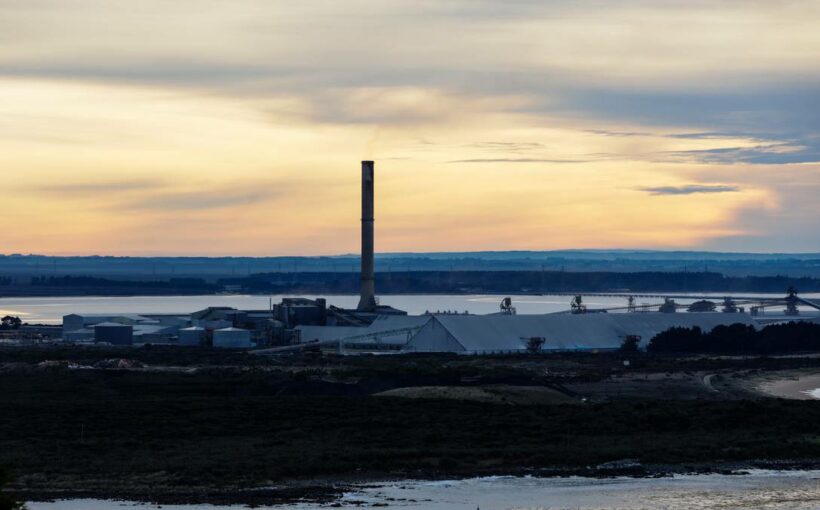Treasury says Rio Tinto risks an investor backlash over its handling of its environmental obligations at Tiwai Point, likening the situation to the destruction of sacred Aboriginal sites in Western Australia that forced the chief executive of the global mining giant to quit.
Documents released under the Official Information Act reveal the frustrations of both Treasury and the Government as they tried in vain to pin down the owners of New Zealand’s aluminium smelter to environmental obligations at Tiwai Point, which has operated as a smelter since 1970.
Although New Zealand Aluminium Smelters’ (NZAS) has a provision in its accounts for cleaning up Tiwai Point of $290 million, Treasury officials admitted in July they “remain unclear about legal responsibility” for a site they believe was more contaminated than the community realised.
“Rio Tinto’s liability (if any) may be quite limited and difficult to enforce,” a joint report of Treasury and the Ministry of Business, Innovation and Employment warned Ministers in September.
There was a risk that if Rio Tinto sold the operation, the new owner may not have the financial capability to fund the eventual remediation. Treasury also warned that NZAS could be tipped into liquidation in which case liquidators could disclaim the site as onerous property, meaning the land – and responsibility for the clean-up, would fall on the Crown.
Treasury pointed out that earlier in 2020 Rio Tinto was responsible for the destruction of a 46,000year-old Aboriginal site in Western Australia “which caused severe reputational damage and backlash from investors” and was blamed for global chief executive, Jean-Sebastien Jacques stepping down from the company.
“Rio Tinto faces a similar risk in New Zealand if they are not mindful of their obligations and Ngai Tahu interest relating to the sites of cultural significance it Tiwai Point,” Treasury warned.
Ngai Tahu said its concern about what was going to happen at Tiwai Point was mounting.
“We at Ngai Tahu are increasingly concerned about developments at the smelter and the risk of significant environmental damage to the local ecosystem and important cultural sites at Tiwai Point,” Terry Nicholas of Hokonui Runanga, said in a statement.
“It’s absolutely vital that Rio Tinto meet its obligations and that whatever the long term picture for the smelter, the local environment is protected for future generations.”
Treasury repeatedly warned that Rio Tinto was not meeting deadlines for information requests from a team of negotiators about its clean-up plans when Tiwai Point closed and would not agree to allowing independent inspectors on site.
The documents also reveal frustrations from Rio Tinto about the negotiators, with its global head of aluminium apparently writing to minister claiming the officials appointed by the Government did not appear to have a mandate to negotiate.
While the Government said repeatedly that its position was that there would be no Crown assistance to keep Tiwai Point operating, the documents show Treasury officials negotiated at length with Rio Tinto about a payment in return for the smelter to make formal clean up commitments.
Eventually Robertson wrote to Rio Tinto in March breaking off the negotiations until Rio Tinto provided more information it had gleaned about the state of the site.
In July 2020, Rio Tinto, owners of about 80 per cent of the smelter, announced plans to close in August 2021, a move which would have caused hundreds of job losses and meant tens of millions of dollars of transmission costs would have had to be shared across other electricity users.
After claiming repeatedly that it needed lower transmission costs to allow it to remain operating beyond this year, in January the company struck a deal with electricity giant Meridian which saw it commit to operating at Tiwai Point until the end of 2024 without any direct government subsidy or transmission relief.
Neither Rio Tinto nor NZAS has yet provided comment on the documents.
While Environment Minister David Parker previously claimed the Government had been “left blind” by the state of Tiwai Point, he indicated in Parliament in April that relations with the company may be improving.
“At the latest meeting that we had with the new chief executive of Rio Tinto smelters in Australasia … there was a noticeable change of tone from the smelter, and one of the things they said was that they intend to remove all of the concrete cathode linings and take proper responsibility for them.”
Parker declined to discuss the Treasury documents.
Rio Tinto’s promise to remove the cathode linings and take responsibility for them could cost $350m, the Treasury claimed.
Source: Read Full Article
